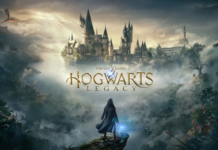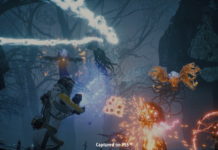Sony’s never really had an exclusive top-flight FPS franchise in the mould of Call of Duty, Half-Life or Microsoft’s Halo series. Two franchises, however, have come pretty close; Killzone and Resistance. Both of them are exceptionally well-made games – sometimes a bit workmanlike, perhaps, but definitely within striking distance of producing a classic.
In 2011, both Insomniac Games (Resistance) and Guerilla Games (Killzone) are launching the third episode of their respective franchises. But does either have the edge to push titles like Black Ops away from Playstation dominance? And if you’re a PS3 owner looking for an FPS exclusive, where should you drop your cash? Let’s take a look at how the series’ measure up.
Launch Date
Let’s get one thing out of the way first; Killzone 3 will probably beat Resistance 3 to launch. It’s slated for a February 25-27th worldwide release, whereas Resistance 3 will follow about six months after. Currently, the game’s got a planned September 6th release in the US.
Who benefits from this? Well, it does mean Guerilla get the first shot at PS3 gamers with itchy trigger fingers. On the other hand, it leaves Insomniac a decent chunk of development time left to play, react to, and outmaneuver their competitors. The matter hinges on this question; will there be enough time at the end of Insomniac’s development cycle for polishing Resistance 3 or will they be straining just to get it done?
Graphics (Technical)
Let’s be honest; Killzone 3 probably has the edge here. While Resistance has always been a fine looking series, Killzone 2 – the series’ PS3 debut – remains arguably the most technically impressive game on any current generation console. Armed with an arsenal of filters, effects and smooth, smooth anti-aliasing, Guerilla hit the standard of their pre-release “target video”; something they never managed for the original, much-hyped game.

Killzone 2 was also the source of an infamous statistic; allegedly, it only uses about two thirds of the PS3’s full processing power. Studio boss Hermen Hulst reckons the threequel is capable of pushing the machine 100% to it’s limits, with no unused processing cycles.
Meanwhile, we’ve seen nothing of Resistance 3; but the sequel’s technical side didn’t improve massively on it’s predecessor. In fact, some aspects were noticeably worse, including a menagerie of strange glitches and odd texture pop-in. If Insomniac can polish the execution in their latest engine iteration, they might just build something that can give Killzone 3 a run for it’s money.
Graphics (Design)
In the past, there’s been a clear winner here; Resistance. While Killzone is a graphical powerhouse, it’s often cited as a prime example of “grey games”; a continual, unvaried progression of drab, monotone cityscapes. Fair or not, it’s a criticism that has stuck.
Meanwhile, Resistance earned critical acclaim for the games varied environments. While it also chose a gritty, military aesthetic, Resistance’s appearances are offset by some imaginative locations. A controversial – but inspired – level in the original game had you battling in the historic stones of Manchester Cathedral, and the game also evoked iconic British locations like Cheddar Gorge.

For the sequel, Insomniac tried to pull off the same trick in a 1950s American setting. Results were somewhat mixed, with many fans preferring the European look of the original. They’ve stuck to their guns for Resistance 3, which is still set in the US. Can Insomniac give their American settings a special touch this time round?
In contrast, Guerilla are moving on, promising to rectify their unvaried environmental design with jungles, frozen wastes and post-nuclear deserts as well as familiar urban settings.
In enemy design, neither team seems to have the edge; Guerilla have tried to turn their Helghast (Space Nazis, basically) into iconic villains, featuring prominently on the cover of every game. Unfortunately, they just look a bit like Darth Vader, and certainly don’t have the personality to carry a game on their own. Over at Insomniac, the Chimera, a rather standard evocation of horrible space aliens, are present in dozens of different varieties, from humanoid troopers to the hulking Leviathan. None of them are particularly iconic; they’re not bad villains, but they won’t be remembered like a goomba, an elite, or a headcrab.
Gameplay
Despite being originally touted as the next Halo, Killzone is a very different kind of game. Where Halo is about instant, escapist gratification, Killzone revolves around a gritty experience of future warfare. Killzone is about cautious strategy and controlled fire, with aggressive AI that attacks in squads.
If either game resembles Halo, it’s Resistance. The wider variance in enemy types means that while there’s still a lot of stop-and-pop outmanoeuvring, there are also sections with waves of animalistic enemies and big, showcase boss monsters.

Which you prefer comes down to the kind of gamer you are; do you rate variety, or would you rather a hardcore experience against enemies who almost resemble human opponents?
There’s no reason why each studio won’t stick to their core gameplay for the sequel, so it seems like a simple case of choosing your favourite.
As for the multiplayer? Resistance 2’s experience system is sure to return, and Killzone’s strong class design will probably join it. Slick multiplayer has been a highlight of both series’ so far, but does either game have the features to topple the all-conquering Call of Duty?
Story
Guerilla have made efforts with their storytelling in Killzone 2, but this is definitely a series where the story doesn’t really matter; it’s just a good excuse for a big intergalactic punch-up. You won’t remember the boiler-plate characters, but you might remember Killzone’s hard sci-fi premise; it’s essentially a race war between humans, and their post-human cousins forced to live in the brutish, unforgiving planet of Helghan. There’s a nice element of moral ambiguity to proceedings; the Helghast are the bad guys, but your side don’t exactly come across as perfect either. It gives Killzone a feeling of realism, despite the sci-fi setting.

Resistance meanwhile, has the same plot as Space Invaders. There’s more nuance to the personal journeys of the characters involved, however. Here, there’s definitely an element of regression between the first game and the sequel. The story of Resistance was made nice and clear by the crisp narration of Captain Rachel Parker, and Nathan Hale’s slow chimeran transformation injected suspense into the plot. Unfortuantely, the storytelling in the sequel was muddier, and the plot fundamentally less interesting. Will Insomniac fix it for the third game, or can Guerilla pull a surprisingly rich story out of the bag? We won’t know until we’ve played the single-player campaigns.
Resistance or Killzone?
All of this speculation comes down to one, fundamental point. If neither developer drop the ball on their second sequel, and fulfil all their promises, then which game you prefer will probably depend on which series you liked better in their former PS3 iterations. As well as the distinctions I’ve touched on here, there are a few little considerations that might push you either way. Does music matter to you? Then Killzone probably has you covered, with Joris de Man winning an Ivor Novello award for the superb soundtrack. Maybe you enjoy Resistance’s co-op emphasis? Or perhaps you prefer a range of fantastical weaponry (Resistance) compared to the more plausible arsenal in Killzone?
In 2011, it’s definitely time for PlayStation fans to choose their weapon.










